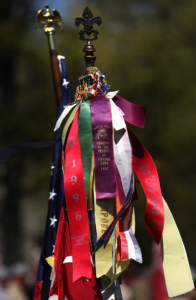A little bit of Scouting History can go a long way to add a little more meaning to the activities your unit does. When you close your troop or pack meeting with a Scoutmaster / Cubmaster minute, meaningful stories of Scouting’s past related to the day’s activities convey the importance of what was achieved and instill a sense of continuing time-honored traditions. A little bit of Scouting history makes it so much easier to create a thoughtful Scoutmaster / Cunmaster minute on the spur of the moment.
Do you need a ceremony right away? Scouting history to the rescue. Many ceremonies are based on important moments in Scouting history like the Unknown Scout Bobcat Advancement from our North Shore resources.
There are so many different ways to enhance your unit program with Scouting history, so buckle up for a whirlwind tour that includes some well-known and some little-known facts from more than 100 years of Scouting.
1
Reference:
Scouting Magazine
Ernest Thompson Seton
Founder of the Woodcraft Indians – 1902
Co-Founder of the Boy Scouts of America – 1910
An inspiration for the international Scouting movement – 1906
Author: The Birch Bark Roll of the Woodcraft Indians, Boy Scout Handbook
Yes, you read that right. Ernest Thompson Seton, co-founder of the Boy Scouts of America, was one of Lord Baden-Powell’s inspirations. Greatly intrigued by Seton’s book, the Birch Bark Roll of the Woodcraft Indians, Lord Robert Baden-Powell met with Seton at the Savoy Hotel in London on Oct. 30, 1906, and the two men spent several hours in discussion about Seton’s work with boys. Just over a year later, Baden-Powell held the first Scouting enclave at Brownsea Island which marked the beginning of the world Scouting movement.

2
It is unclear when this tradition began, but there are several references that place it in or before the 1950’s.
How Scouts Remembered to “Do a Good Turn Daily”
In the early days of the Boy Scouts of America, Scouts would carry a coin (similar to the one shown at right) in their left pocket as a reminder to “do a good turn daily”. Upon completing their good deed for that day, they would secretly transfer the coin to their right pocket. The next morning it would begin again by moving the coin back to their left pocket. This is a great tradition that provides instant reinforcement of a core tenet of BSA. By simply patting their pockets or an accidental movement, a Scout is reminded to do something that will make our world just a little bit better each day.
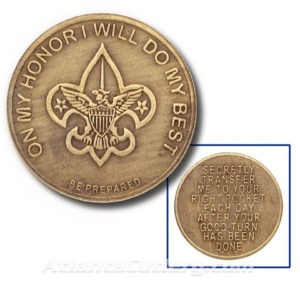
3
Reference:
Wikipedia
The Unknown Scout
This is probably the best known story of the Boy Scouts of America. This is how it goes… William D. Boyce got lost in the London fog during a layover while on his way to Africa for a safari (little-known fact, it was a photo safari, no animals were killed). A young man approached him and offered to guide him back to his hotel. When they arrived, Boyce offered the boy a tip in appreciation of his kindness, which was the tradition of that time, but he refused it explaining that he was a Scout. This chance encounter intrigued Boyce and on his return trip, he visited the Scout office in London where he gathered materials on the Scouting movement. After his return to the USA, Boyce and others founded the Boy Scouts of America. This story is a great way to demonstarte how even a small kindness can have a resounding impact on millions and millions of lives.
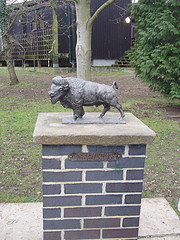
BSA sent this statue of an American Buffalo to the World Scouting headquarters in Gillwell Park, England, in honor of the Unknown Scout.
4
Reference:
Wikipedia
The Unknown Scout – Part 2
The truth of the legend is hotly debated but most historians agree that there are some exagerations in the story of the “Unknown Scout” above. While all accounts agree that a Brittish Scout did assist William Boyce that day, meteorological records indicate that there was no fog in London that day. In fact, most accounts say that Boyce was actually standing right across the street from his hotels, and so was obviously not lost. Boyce did offer a tip and the Scout did refuse it, explaining why. To me, this less glamorous version of the story is even more compelling. The good deed that inspired the founding of the Boy Scouts of America, touching millions of lives for the better over more than a century, was simply to help a man to cross a street, a man who was fully capable of doig so on his own. This was a small kindness indeed, and on a scale that each Scout is capable of.

July 4, 1926 this statue was presented to Prince Edward and Baden-Powell along with the first Silver Buffalo awards, the 1st to Baden-Powell and the 2nd to the “Unknown Scout”.
5
Reference:
Wikipedia
The Origins of Webelos
Most Scouters and Webelos Scouts know that Webelos means “We’ll Be Loyal Scouts” but did you know that the 4 consonants in Webelos, W-B-L-S, are not accidental? In fact, they are ordered specifically to describe the path to Scouts BSA. The original 3 ranks of Cub Scouting were Wolf, Bear, and Lion, with lion being the senior rank. BSA identified that Cub Scouts joining a Boy Scout, now Scouts BSA, troop often struggled because of the significant differences between the 2 programs. The Webelos program was created out of the need to better prepare these younger Scouts for their new journey. The name, Webelos, was drawn from the path to Boy Scouting. “W” for Wolf, “B” for Bear, “L” for Lion, and “S” for Scouts. WBLS became Webelos.
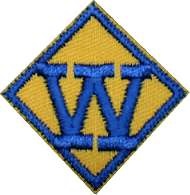
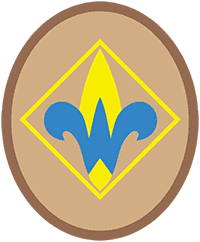
6
Your Unit History is on Your Flag
Perhaps you haven’t thought of it this way before, but your unit history is chronicled in the ribbons attached to your unit flag. I am Asst. Cubmaster in a veteran unit of more than 25 years. On occasion, I will reach into the bushy bunch of ribbons dangling from the top and select one at random without looking. I read it to our Scouters, Scouts, and families and talk about what went into earning that. Sometimes it is general knowledge but other ribbons may spark a specific story from the pack history. The Scouts are always awed by the really old ribbons and especially pleased by the ones we earned during their tenure. What do you say? Are you ready to start a new unit tradition?
